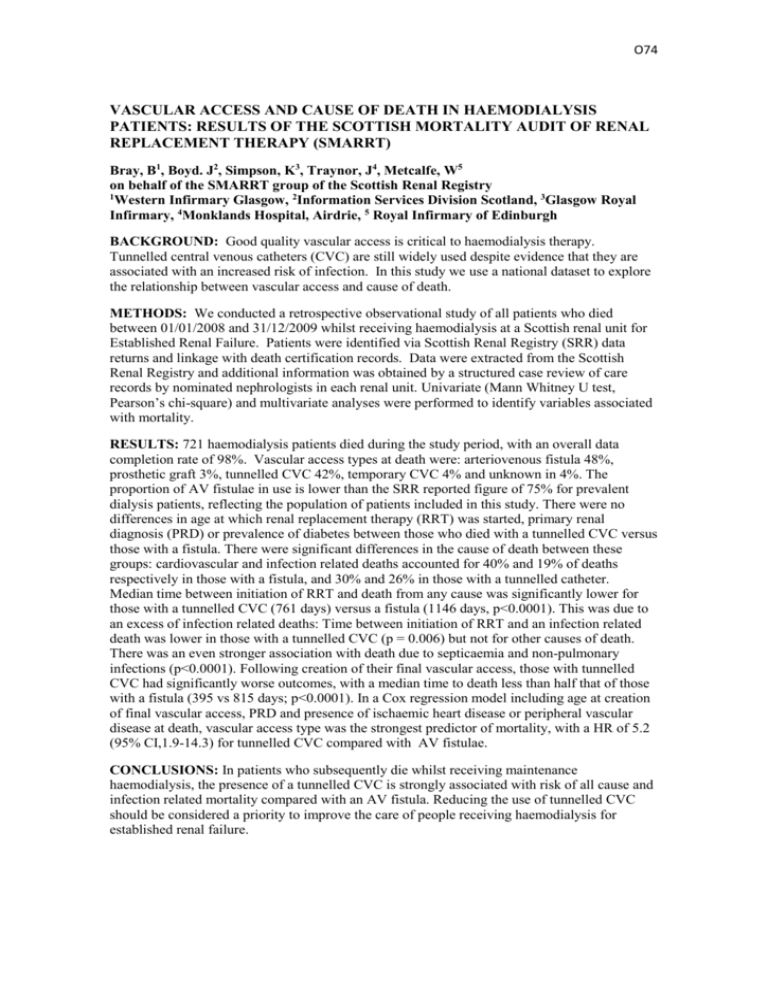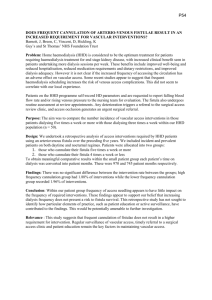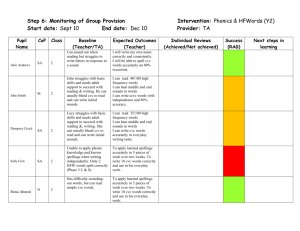Vascular Access and Cause of Death in Haemodialysis Patients
advertisement

O74 VASCULAR ACCESS AND CAUSE OF DEATH IN HAEMODIALYSIS PATIENTS: RESULTS OF THE SCOTTISH MORTALITY AUDIT OF RENAL REPLACEMENT THERAPY (SMARRT) Bray, B1, Boyd. J2, Simpson, K3, Traynor, J4, Metcalfe, W5 on behalf of the SMARRT group of the Scottish Renal Registry 1 Western Infirmary Glasgow, 2Information Services Division Scotland, 3Glasgow Royal Infirmary, 4Monklands Hospital, Airdrie, 5 Royal Infirmary of Edinburgh BACKGROUND: Good quality vascular access is critical to haemodialysis therapy. Tunnelled central venous catheters (CVC) are still widely used despite evidence that they are associated with an increased risk of infection. In this study we use a national dataset to explore the relationship between vascular access and cause of death. METHODS: We conducted a retrospective observational study of all patients who died between 01/01/2008 and 31/12/2009 whilst receiving haemodialysis at a Scottish renal unit for Established Renal Failure. Patients were identified via Scottish Renal Registry (SRR) data returns and linkage with death certification records. Data were extracted from the Scottish Renal Registry and additional information was obtained by a structured case review of care records by nominated nephrologists in each renal unit. Univariate (Mann Whitney U test, Pearson’s chi-square) and multivariate analyses were performed to identify variables associated with mortality. RESULTS: 721 haemodialysis patients died during the study period, with an overall data completion rate of 98%. Vascular access types at death were: arteriovenous fistula 48%, prosthetic graft 3%, tunnelled CVC 42%, temporary CVC 4% and unknown in 4%. The proportion of AV fistulae in use is lower than the SRR reported figure of 75% for prevalent dialysis patients, reflecting the population of patients included in this study. There were no differences in age at which renal replacement therapy (RRT) was started, primary renal diagnosis (PRD) or prevalence of diabetes between those who died with a tunnelled CVC versus those with a fistula. There were significant differences in the cause of death between these groups: cardiovascular and infection related deaths accounted for 40% and 19% of deaths respectively in those with a fistula, and 30% and 26% in those with a tunnelled catheter. Median time between initiation of RRT and death from any cause was significantly lower for those with a tunnelled CVC (761 days) versus a fistula (1146 days, p<0.0001). This was due to an excess of infection related deaths: Time between initiation of RRT and an infection related death was lower in those with a tunnelled CVC (p = 0.006) but not for other causes of death. There was an even stronger association with death due to septicaemia and non-pulmonary infections (p<0.0001). Following creation of their final vascular access, those with tunnelled CVC had significantly worse outcomes, with a median time to death less than half that of those with a fistula (395 vs 815 days; p<0.0001). In a Cox regression model including age at creation of final vascular access, PRD and presence of ischaemic heart disease or peripheral vascular disease at death, vascular access type was the strongest predictor of mortality, with a HR of 5.2 (95% CI,1.9-14.3) for tunnelled CVC compared with AV fistulae. CONCLUSIONS: In patients who subsequently die whilst receiving maintenance haemodialysis, the presence of a tunnelled CVC is strongly associated with risk of all cause and infection related mortality compared with an AV fistula. Reducing the use of tunnelled CVC should be considered a priority to improve the care of people receiving haemodialysis for established renal failure.



